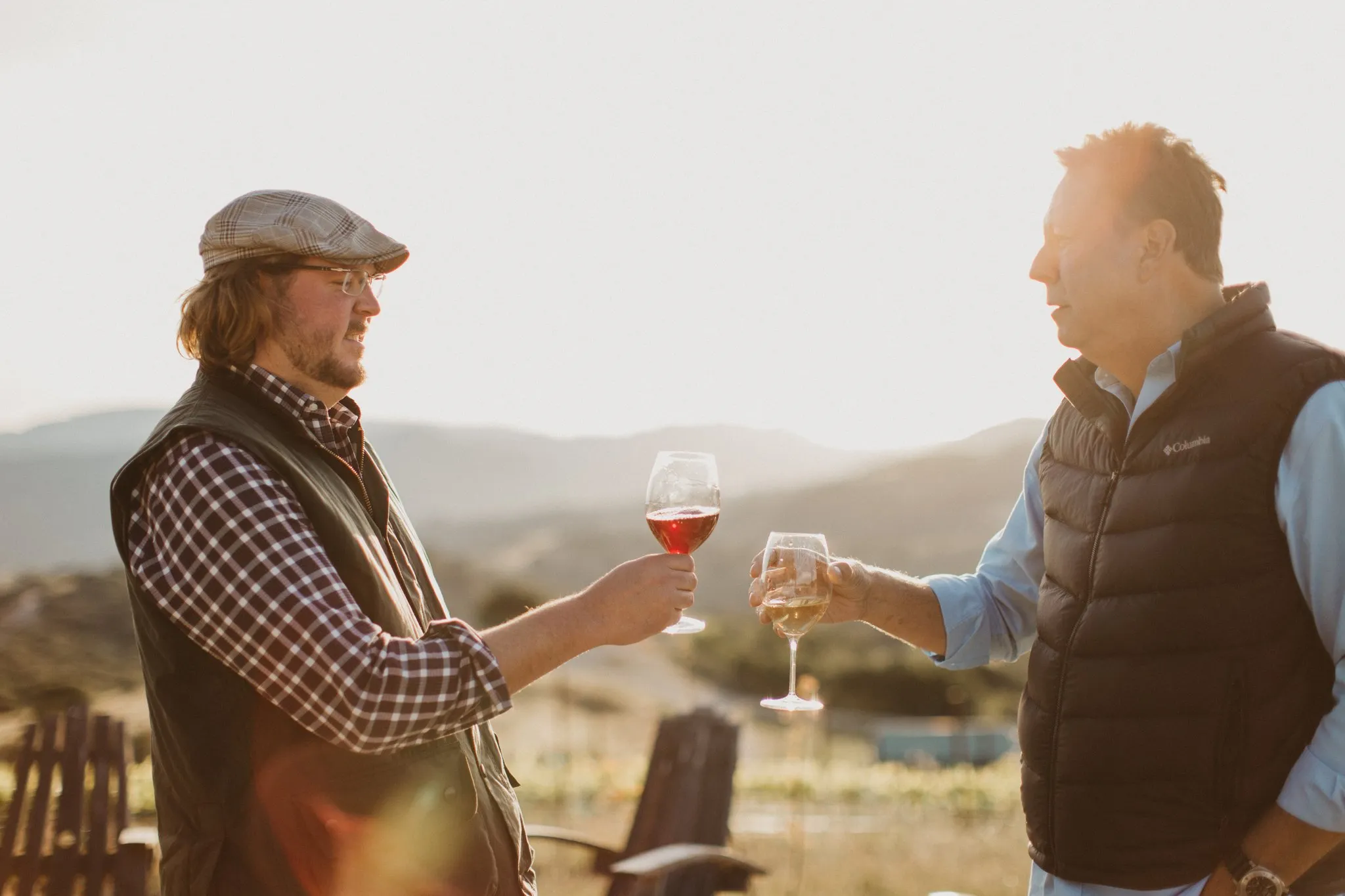“On the wide level acres of the valley the topsoil lay deep and fertile. It required only a rich winter of rain to make it break forth in grass and flowers.”
-John Steinbeck
Designed by Brad and Garrett Bowlus, with the assistance of renowned viticulturist Dr. Alfred Cass, Albatross Ridge’s 25 acres of vines are planted as a mosaic of 12 distinctive vineyard blocks along California’s Carmel Coast. Featuring different elevations, exposures, soil makeups and clonal selections, this vineyard diversity allows Winemaker Garrett Bowlus to accentuate the complexity of the site in the wines of Albatross Ridge. The vineyard includes eight blocks and four clones (828, 777, Pommard and 115) of Pinot Noir, and four blocks and two clones (96 and 15) of Chardonnay. The vines are the finest Burgundian clones, all of which were chosen for their suitability to the extreme site, and their ability to create complex, elegant wines. In addition, because the vineyard was planted with the drought-tolerant 1103P rootstock, the vines can be farmed with an absolute minimum of water.
One of the defining features that makes Albatross Ridge so special is its unique soils. Though it reaches elevations as high as 1,250 feet, the vineyard’s soils are made of ancient uplifted marine seabed. These diatomaceous and shale soils are similar to those found in Burgundy, and are optimal for growing complex Pinot Noirs and Chardonnays, with rare and distinctive mineral qualities. With steep grades up to 25%, these well-draining soils also contribute to the vineyard’s low yields, which on average, are well under 2 tons per acre.
Guided by winemaker Garret Bowlus, Albatross Ridge is farmed by hand, incorporating traditional techniques and the latest technology. Because Brad and Garrett believe a meticulous, hands-on approach translates into a more pure and authentic reflection of the site—and therefore, higher quality wines. “My wife, Jill, and I view our vineyard as a multigenerational commitment,” says father Brad. “Our grandchildren play among these vines, and one day I hope that they will help farm them.”

